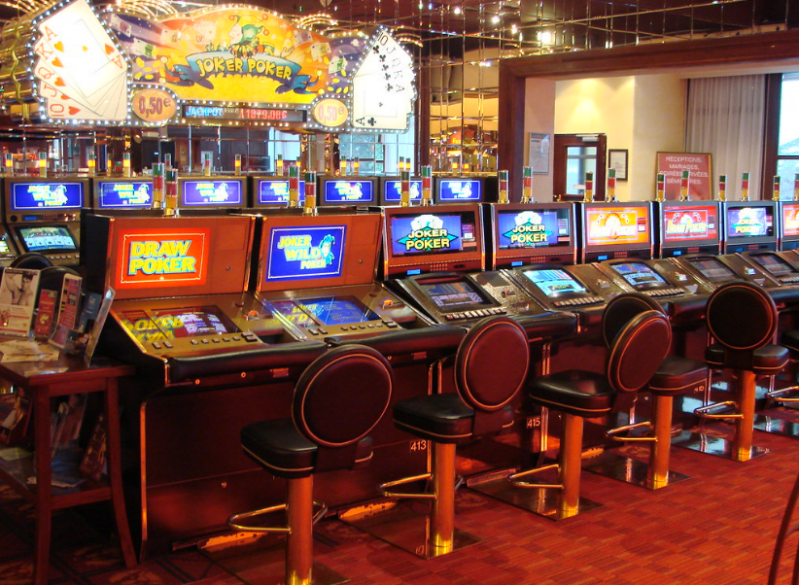
Gambling games have long captivated the human imagination, drawing participants into a universe filled with chance, planning, and the allure of excitement. Each game is meticulously crafted not just for fun, but also to evoke particular emotional responses that keep participants engaged and invested. Understanding the motivations behind these designs reveals much about how human psychology plays a vital role in the gaming experience.
From the dazzling lights and lively sounds to the complex layering of rules and incentives, casino games are designed to create an atmosphere of thrill and anticipation. Game designers leverage psychological principles to influence player behavior, whether through the use of big prizes, close-call situations, or social connections. By examining these elements, we can better appreciate how casino games fulfill not just a desire for entertainment, but more profound psychological needs for adventure and risk.
Understanding Player Behavior
Casino games are crafted with a deep grasp of player psyche, which is essential for drawing in and retaining players. The rush of the game, combined with the anticipation of winning, produces a strong draw. Game designers make use of elements like audio cues, colorful graphics, and engaging gameplay to capture attention and elicit emotional responses. These sensory experiences enhance the total environment, making players feel more attached in the game.
Another notable aspect of player behavior is the concept of risk and reward. Casino games often weigh high-stakes situations with the potential for substantial rewards, which can lead to the phenomenon known as near-miss effect. When players come within reach to winning, the brain secretes dopamine, strengthening their behavior and prompting them to keep playing in pursuit of that elusive win. This cycle of wish and frustration plays a crucial role in how games are constructed and marketed.
Lastly, community aspects also play a critical role in player behavior at casinos. Many games are designed to be played in teams or in company with other players, fostering a sense of community and collective experience. The community engagement inherent in games like blackjack enhances enjoyment and can culminate in extended gameplay. Designers leverage on this by creating environments that encourage players to remain, connect, and return, making the overall casino experience more attractive.
The Role of Visuals and Audio
Imagery and audio play a crucial role in enhancing the gambler’s experience within gambling games. Designers utilize vibrant colors, striking graphics, and engaging animations to grab players’ attention and maintain their interest. The use of themes, such as exploration or luxury, helps create an immersive atmosphere that transports players into another world. By connecting to the senses, these elements contribute to a intensified emotional response, prompting players to engage more deeply with the games.
Audio design is equally important in reinforcing the experience of gambling games. The combination of background music, sound effects for successful combinations, and ambient noises creates an auditory landscape that keeps players fascinated. Audio cues associated with victories, such as chiming bells or celebratory music, evoke feelings of thrill and satisfaction, encouraging players to keep playing. These sound cues are carefully placed to amplify the thrill of the game and create a more engaging experience.
Moreover, the alignment of visuals and sound is essential for supporting the game’s overall concept and mood. Each element should coordinate seamlessly to create a cohesive experience that draws players in. The effective use of this integration not only improves user satisfaction but also boosts the chances of return play, as players become more engaged in the immersive world that the casino games offer. This thoughtful combination of imagery and sound ultimately enhances player engagement and loyalty.
Incentive Systems and Engagement
The creation of gambling games greatly relies on reward systems to ensure participants involved and returning for more. These systems are based in psychological theories that exploit human behavior and motivation. Participants are often driven by the thrill of success, which is supported by instant responses through the game’s design. This instant gratification not only enhances the gaming experience but also cultivates a feeling of achievement, prompting participants to continue participating in hopes of greater rewards.
Casinos adopt various reward structures, such as large payouts, bonuses, and multipliers, to captivate players. These elements create a layer of thrill that maintains interest. Additionally, the randomness of outcomes plays a crucial role in keeping interest. The intermittent reinforcement schedule, where successes are unpredictable but happen often enough, keeps participants on edge and motivated to keep playing. This cycle of anticipation and expectation is essential to the success of gambling experiences.
In addition, community aspects, such as competitive events and multiplayer features, enhance the engagement factor by leveraging the desire to compete of participants. siti casino non AAMS The communal aspect of playing with fellow participants can intensify the excitement of winning and create a sense of community within the casino. By integrating these community elements with efficient reward systems, casino games don’t just provide entertainment but also nurture a stronger bond among players, solidifying their loyalty to the gaming experience.